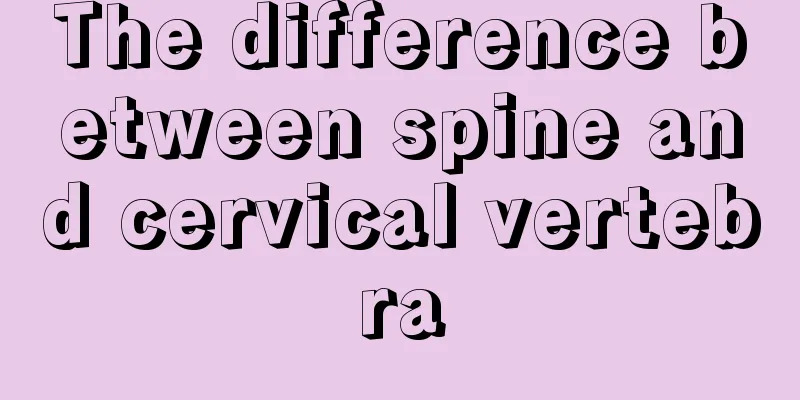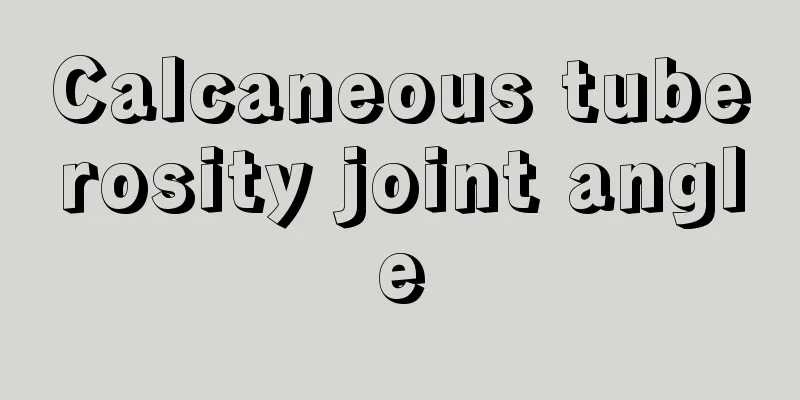The difference between spine and cervical vertebra

|
Many people think that the spine and cervical vertebrae are the same joint. In fact, the cervical vertebrae and the spine are very different. For most people, it is very necessary to understand the difference between the spine and the cervical vertebrae. In this way, when pain occurs in the spine and cervical vertebrae, you can better distinguish which part has a problem and prescribe the right medicine. So what are the differences between the spine and the cervical spine? Cervical spine Refers to the cervical vertebrae, which are located below the head and above the thoracic vertebrae. Located in the cervical spine, there are 7 pieces in total, surrounding the cervical cord and its meninges. Connected by intervertebral discs and ligaments, they form a physiological curvature that is convex forward. The characteristics of the cervical vertebrae are that the vertebral bodies are small and oval, with transverse foramina on the transverse processes through which the vertebral artery and vertebral vein pass; the spinous processes are short and branched; the joints of the upper and lower articular processes are approximately horizontal, allowing the neck to move flexibly. The upper and lower notches of adjacent vertebrae form the intervertebral foramen, through which spinal nerves and blood vessels pass. There are seven cervical vertebrae, of which the 3rd, 4th, 5th, and 6th cervical vertebrae are typical vertebrae, and 1st, 2nd, and 7th are atypical vertebrae. Characteristics of typical cervical vertebrae (3rd, 4th, 5th, 6th cervical vertebrae): The vertebral body is small, with the left-right diameter larger than the anterior-posterior diameter, protruding on the upper side (forming the lateral joint) and concave on the lower side; The vertebral foramen is large and triangular; All cervical vertebrae (typical or atypical) have vertebral blood vessels in the transverse foramen (vertebral artery and vein, but no vertebral artery in the transverse foramen of the 7th cervical vertebra); Characteristics of 1, 2, and 7 cervical vertebrae. The first cervical vertebra has no vertebral body and is ring-shaped, called the atlas, which is composed of anterior arch, posterior arch and lateral masses. The odontoid process behind the anterior arch articulates with the odontoid process of the second cervical vertebra. The oval depression on the lateral mass forms a joint with the occipital condyle at the base of the skull, allowing the head to nod. The second cervical vertebra (or axis) has an upward finger-like protrusion called the odontoid process. The atlas can rotate around the odontoid process. The spinous process of the 7th cervical vertebra is particularly long and nearly horizontal, with no branches at the end, forming a nodule that is easily palpable under the skin and is often used as a mark for counting the ordinal numbers of vertebrae. Observe the vertebral foramen and transverse foramen, and note that the vertebral foramen and transverse foramen are smallest at the 7th cervical vertebra. Observe the irregular vertebral body, lateral articular processes, triangular vertebral foramen, and superior articular surface of the articular processes of a typical vertebra. spine The human spine is composed of 33 vertebrae (7 cervical vertebrae, 12 thoracic vertebrae, 5 lumbar vertebrae, and 9 sacrum and coccyx) connected by ligaments, joints and intervertebral discs. The upper end of the spine supports the skull, is connected to the hip bones at the lower end, is attached to the ribs in the middle, and serves as the posterior wall of the thorax, abdominal cavity, and pelvic cavity. The spine has the functions of supporting the trunk, protecting the internal organs, protecting the spinal cord and performing movements. A longitudinal spinal canal is formed inside the spine from top to bottom, which contains the spinal cord (Note: the spine is not equal to the vertebrae or vertebrae, the spine is composed of N vertebrae). The spine is divided into five sections: cervical, thoracic, lumbar, sacral and coccygeal. The upper part is long and movable, like a bracket, hanging the chest wall and abdominal wall; the lower part is short and relatively fixed. The weight of the body and the shock it receives are transmitted to the lower limbs. The spine is composed of vertebrae and intervertebral discs and is a very flexible and mobile structure. The shape of the spine can change considerably with the movement loads of the body. The mobility of the spine depends on the integrity of the intervertebral discs and the harmony between the articular processes of the related vertebrae. The length of the spine is composed of vertebral bodies, 3/4, and intervertebral discs, 1/4. structure The spine is composed of 26 vertebrae, namely 24 vertebrae (7 cervical vertebrae, 12 thoracic vertebrae, 5 lumbar vertebrae), 1 sacrum, and 1 coccyx. Since the sacrum is composed of 5 bones and the coccyx is composed of 4 bones, the normal spine can also be composed of 33 bones. (As shown in the figure: side of the spine || behind the spine) Such a large number of vertebrae are able to maintain a high degree of stability because they are connected by strong ligaments[1]. They are also able to move to a considerable extent because they are connected to each other by intervertebral joints. Although the range of motion of each vertebra is very small, if all of them move together, the range is greatly increased. The front of the spine is made up of stacked vertebrae, and its front is adjacent to the thoracic and abdominal internal organs. It not only protects the organs themselves, but also protects the nerves and blood vessels to the organs, with only a thin layer of loose tissue separating them. When the vertebral body is destroyed, pus may accumulate in the back of the pharynx in the neck, or descend along the neck to the infraclavicular fossa, or along the brachial plexus to the axilla; in the chest, it may follow the intercostal nerves to the chest wall, or may spread to the mediastinum; in the waist, it may descend along the psoas major fascia to form a psoas major abscess, which may flow to the lower groin, or bypass the lesser trochanter of the femur to the buttocks. The back of the spine is composed of the vertebral arches, lamina, transverse processes and spinous processes of each vertebra. They are connected to each other by ligaments, and their superficial surface is only covered with muscles. They are relatively close to the body surface and easy to feel. Lesions on the posterior spine tend to penetrate the skin. The vertebral canal is located between the front and back of the spine, which contains the spinal cord. When the surrounding bony structures such as vertebral bodies, vertebral arches, and lamina invade the vertebral canal due to fractures or other lesions, it can cause spinal cord compression. Even just a small amount of bleeding and granulation tissue can cause paraplegia. |
<<: What soup can reduce internal heat and detoxify?
>>: Is lying flat good for the cervical spine?
Recommend
I woke up with panic, chest tightness and shortness of breath
Adequate sleep can provide us with energy for the...
Is hair loss a sign of kidney deficiency?
Many friends may have symptoms of hair loss. When...
Basic skills for beginners of street dance
Most people think street dance is very cool when ...
What are the methods for determining mite allergy
In daily life, there are many substances that can...
What are the eight key points in diagnosing lung cancer?
In recent years, the incidence of lung cancer has...
Things to note after teeth cleaning, be careful of these!
White teeth are a sign of health and beauty. Whit...
How does depression come about?
Depression is a mental illness, which should neve...
What is the function of freeze-dried tablets
Most freeze-dried tablets can supplement trace el...
Do you know what symptoms of testicular cancer are?
Do you know what symptoms testicular cancer has? ...
What is lactose intolerance
Lactose intolerance is very common in daily life....
What will happen if I have a teratoma of the left ovary
Left ovarian teratoma may cause abdominal pain, m...
What are the causes of vaginal itching and peeling
Nowadays, many women are troubled by the phenomen...
I suddenly couldn't breathe when I was sleeping at night
When people sleep at night, certain nerves in the...
Toothpaste to remove stains
The main function of toothpaste is to clean our t...
Is melanoma hereditary?
Melanoma is one of the most common skin tumors. I...









